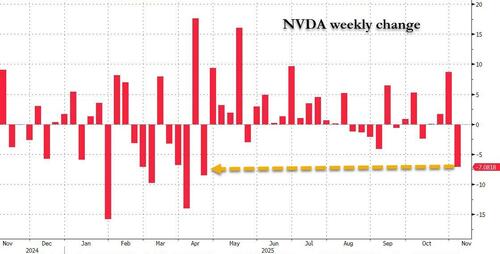The first of them is 7 trillion. As in 7 trillion dollars. A recent report from DSP Investment Managers is titled “NETRA: Early Warning and Signals Through Charts”, complete with a rather fierce-looking eye on the first page (https://bit.ly/40evqFc).
There are 10 charts about various financial phenomena, one of which mentions “contango” and “backwardation”. Elsewhere, there’s a declaration that the report uses “words or phrases such as ‘will’, ‘expect’, ‘should’, ‘believe’ and similar expressions or variations of such expressions that are ‘forward looking statements’”, and “actual results may differ materially from those suggested by the forward looking statements”.
Whatever all that means.
Five of the charts present a generally rosy picture of India—like “India Has Delivered Returns To Investors”, “Banking Sector Is In Great Shape” and “The Coming Investments Upsurge”. That last one contains the $7 trillion figure. It gives us—or at least purports to give us—the country’s spending on infrastructure from 1960 onwards, one vertical bar for each year.
It carries this legend: “India has spent $14 trillion on infrastructure in 75 years since Independence. 50% of that, or $7 trillion, was spent in last nine years. Another $7 trillion will be spent in next six years.” (Note: despite that mention of “75 years since Independence”, the chart actually begins with 1960.)
The last nine years? That’s since 2014. You don’t need me to point out the significance of that date, and thus of DSP’s assertion here: This government has spent as much on Indian infrastructure in its nine years in office as all previous Indian governments since Independence did.
A pretty impressive claim, wouldn’t you say? Yes indeed, and at least one well-known-on-social-media fan of this government was pumped up enough to put it on Twitter for his 300,000 followers to peruse: https://twitter.com/rishibagree/status/1632373081812664320.
But is it a reasonable claim? To put that question in some perspective, consider this thought experiment. Suppose I tell you: “I spent more on movie tickets in 2022 than in 2021 and 2020 combined.” You might be impressed, thinking I saw more films in 2022 than in both those years together. But then you find what I paid, on average, for tickets in each of those years: ₹200 in 2020, ₹250 in 2021 and ₹500 in 2022. (These are not actual numbers, just ones off the top of my head, you understand.)
Well, hello: Naturally it cost me more in 2022 to fuel my movie habits. But we can’t conclude I watched more films in 2022 than previously. After all, if I watched the same number of films every year, my claim above would still be true. (This is also why “This new film is the highest-grossing of all time!” is an assertion that deserves investigation.)
The point is, prices rise. Inflation happens. We can reasonably compare spending—tickets, infrastructure, hair oil, whatever—across different years only if we take such inflation into account.
So how has inflation in India behaved over the “75 years since Independence”? To answer such questions, the site Worlddata.info is an indispensable resource. It offered me these lines: “The inflation rate for consumer prices in India moved over the past 61 years between -7.6% and 28.6%…from 1960 to 2021, the average inflation rate was 7.5% per year.”
Three things to note there. One, Worlddata also lacks data from prior to 1960. Two, these are consumer price inflation numbers, and food is a major contributor to that. Inflation in infrastructure spending may be different. So let’s be conservative and assume an average inflation rate of 5%. Three, on the DSP chart, it is close to impossible to divine the spending in the years prior to 1980—the vertical bars are that short. So let’s ignore those years. In fact, let’s ignore the years prior to 1990, which is when annual spending touched about $100 billion and the bars become a little easier to put numbers to.
Take the 1990 $100 billion and inflate it by 5% year-on-year until 2022, the most recent year in the DSP chart. That’s 32 years of 5% annual inflation: We get a figure of $476.5 billion. That is, $100 billion in 1990, adjusted for inflation, is equivalent to $476.5 billion today.
Next, the chart says about $100 billion was spent in 1991, too. Inflate that by 5% a year, for the 31 years till 2022. That gives $453.8 billion. Do the same for each of year till 2013. Then sum up all those figures. You get $13,881 billion, or let’s call it nearly $14 trillion. Remember: By the chart, spending between 1990 and 2013 was a total of about $6.1 trillion. But adjust that for inflation, and it’s equivalent to $14 trillion today.
How does that compare with the spending after 2014? By the chart, it is about $6.75 trillion—close enough to DSP’s $7 trillion claim. But adjusted for inflation in the same way, that’s equivalent to a little over $8 trillion today.
That is: In today’s dollars, India spent about $14 trillion on infrastructure between 1990 and 2013, compared with about $8 trillion since 2014. So much for DSP’s assertion of $7 trillion in the 67 years before 2014, and $7 trillion in the eight years after 2014.
Besides, remember that we haven’t even considered spending in the 43 years between Independence and 1990. Adjust that money for inflation and add it to the pre-2014 total, and we’d arrive at a number considerably larger than $14 trillion.
What’s more, if we use the Worlddata inflation rate of 7.5%, we end up with an even worse mismatch between pre- and post-2014 spending on infrastructure.
Any way you look at it, DSP’s claim cannot stand.
In fact, examining it is a reminder of an excellent dictum to hold tight to: Be very sceptical of numbers used for chest-thumping and rosy pictures.
There’s a second such I wanted to get to, but I’m out of space. That’s 180. As in 180 kmph, the speed that we’re told certain new Indian trains are capable of. About that number, another time. Or maybe you, sceptical you, will examine it.
Once a computer scientist, Dilip D’Souza now lives in Mumbai and writes for his dinners. His Twitter handle is @DeathEndsFun.
Download The Mint News App to get Daily Market Updates.
More
Less















